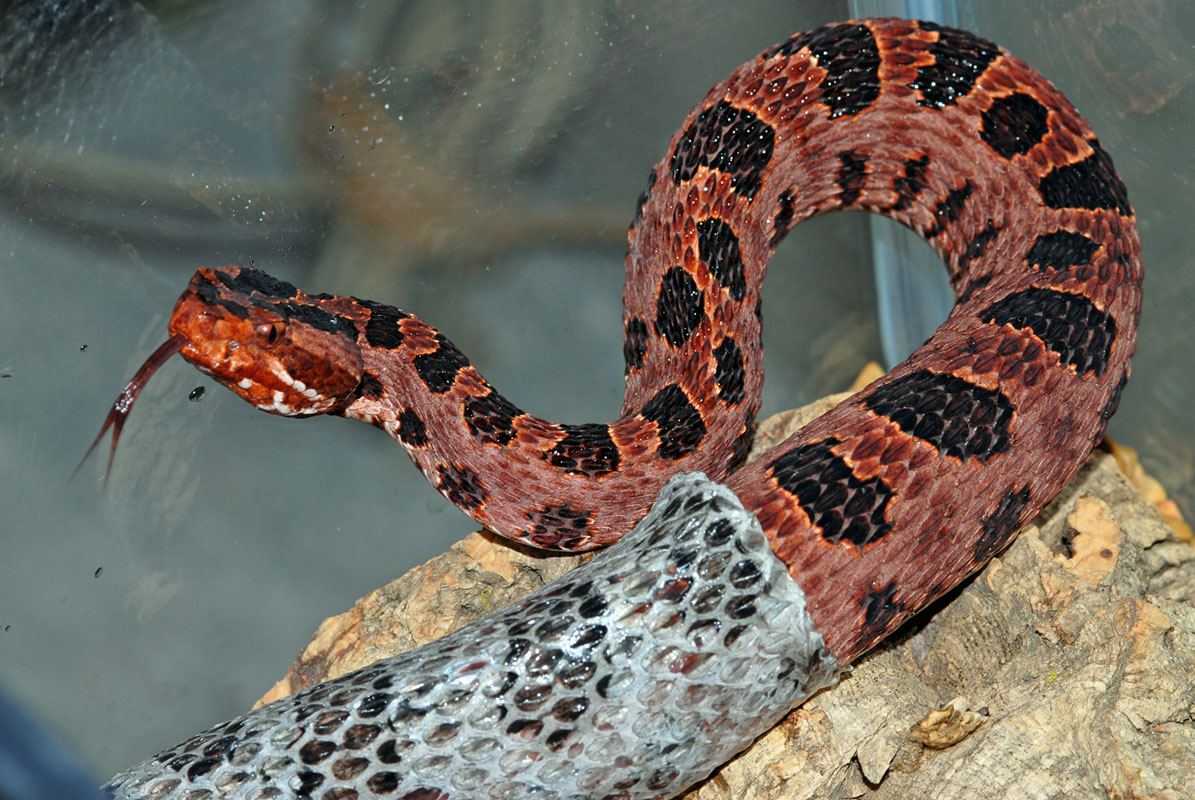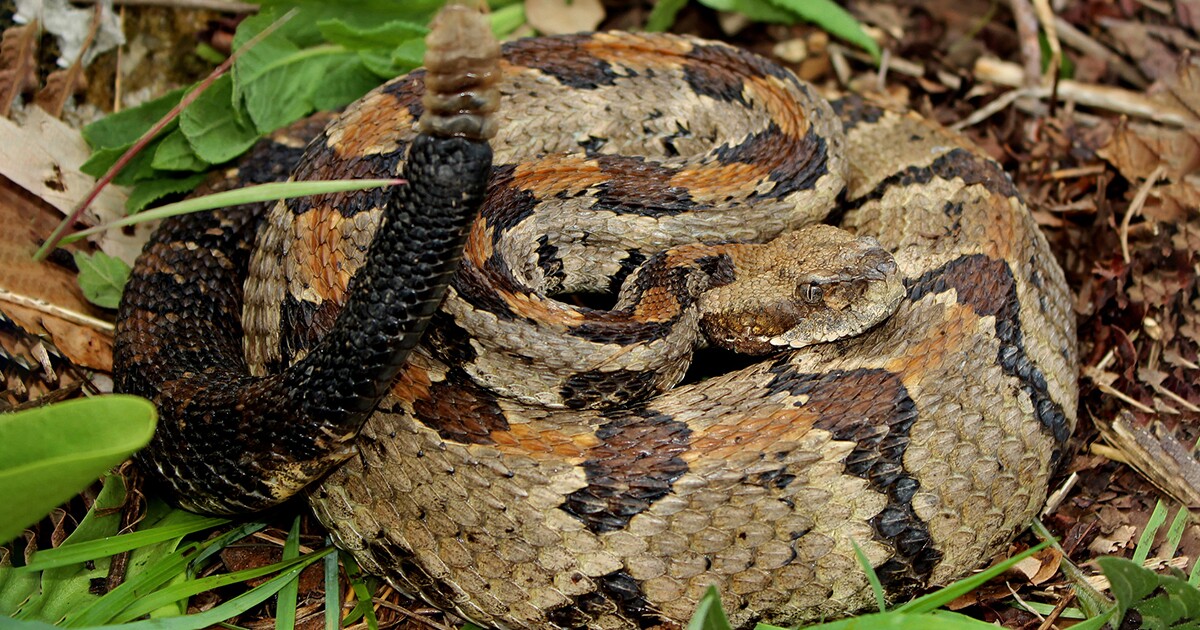North Carolina is home to a diverse range of wildlife, including several species of venomous snakes. Of these, three are rattlesnakes: the Carolina Pygmy Rattlesnake, Timber Rattlesnake (also known as the Canebrake Rattlesnake), and Eastern Diamondback Rattlesnake.
While rattlesnakes can be dangerous, they are an important part of the ecosystem and play a vital role in controlling rodent populations. In this article, we will explore the characteristics of each of the three types of rattlesnakes found in North Carolina and how to identify them.
You are reading: Discover The Types Of Rattlesnakes In North Carolina

3 Types Of Rattlesnakes In North Carolina
Carolina Pygmy Rattlesnake

The Carolina Pygmy Rattlesnake (Sistrurus miliarius miliarius) is the smallest species of rattlesnake in the United States. Here are some key characteristics of the Carolina Pygmy Rattlesnake:
Appearance:
– Dull gray with a row of dark spots running down the center of its back and along its sides.
– Individuals from Hyde, Beaufort, and Pamlico counties have a red or pinkish background color.
– The young have yellow-tipped tails that they use to lure prey.
– The rattle is so small that its “buzz” sounds like a small insect.
Habitat and Range:
– The Carolina Pygmy Rattlesnake prefers upland habitats such as sand hills and longleaf pine savannas.
– They can occasionally be found in the foothills of South Carolina and Georgia.
– They are rare but can be found in the southeastern Coastal Plain and in the Sandhills of North Carolina in pine flatwoods and scrub oak habitats.
– They tend to inhabit areas that are in close proximity to water and have ample places of coverage (herbaceous and shrub layers), such as temperate forests and marshes.
Feeding and Diet:
– Carolina Pygmy Rattlesnakes feed on lizards, mice, and frogs and will sometimes eat other small snakes.
Read more : The Top 8 Biggest Spiders Crawling Around Canada
It is important to note that the Carolina Pygmy Rattlesnake is venomous and should be treated with caution. If you encounter one, it is best to give it a wide berth and avoid disturbing it.
Timber Rattlesnake (Canebrake Rattlesnake)

The Timber Rattlesnake, also known as the Canebrake Rattlesnake or Banded Rattlesnake, is a venomous pit viper species that is endemic to eastern North America. Here are some key characteristics of the Timber Rattlesnake:
Appearance:
– Large, heavy-bodied snakes with a series of large, black, chevron-like crossbands down the pinkish gray or tan body.
– There is a reddish-brown stripe running down the center of the back.
– The tail is usually uniformly black and ends in a rattle, which is often held above the ground.
– Most adult Timber Rattlesnakes are about 36-60 inches (76-152 cm) in total length, with a record length recorded of 74.5 inches (189 cm).
Habitat and Range:
– Timber Rattlesnakes can be found in a variety of habitats, including mountainous or hilly forests, hardwood or pine forests, swamps and river floodplains, lowland cane thickets, and agricultural fields.
– Those found in the western and higher altitude parts of its range are called timber rattlers, while those found in lower elevation areas, such as the Piedmont and the Atlantic Coastal Plain, are called canebrakes.
– Canebrakes are found in swamps, the higher lands of river floodplains, and farmlands.
– Timber Rattlesnakes are found as far north as New York and as far south as northern Florida.
Feeding and Diet:
– Timber Rattlesnakes feed on small mammals, such as mice and squirrels, as well as birds and other reptiles.
It is important to note that the Timber Rattlesnake is venomous and should be treated with caution. If you encounter one, it is best to give it a wide berth and avoid disturbing it.
Eastern Diamondback Rattlesnake
The Eastern Diamondback Rattlesnake (Crotalus adamanteus) is the largest species of rattlesnake in the world and is one of the heaviest venomous snakes in the Americas. Here are some key characteristics of the Eastern Diamondback Rattlesnake:
Appearance:
– Most adult Eastern Diamondback Rattlesnakes are about 33-72 inches (84-183 cm) in total length, with a record length recorded of 99 inches (251.5 cm).
– They are a very large, heavy-bodied snake with a row of large dark diamonds with brown centers and cream borders down its back.
– The ground color of the body is brownish, and the tail is usually a different shade of brown or gray.
– The rattle is large and can be heard from a distance.
Habitat and Range:
– Eastern Diamondback Rattlesnakes are found in the southeastern United States, from southeastern North Carolina, south along the coastal plain through peninsular Florida to the Florida Keys, and west along the Gulf Coast through southern Alabama and Mississippi to southeastern Louisiana.
– They prefer scrublands, coastal forests, barrier islands, and pine and wiregrass flatwoods.
– They can also be found in slightly more moist areas, such as wet prairies or savannas and around the borders of wetlands.
Feeding and Diet:
– Eastern Diamondback Rattlesnakes feed on small mammals, such as rabbits and rodents, as well as birds and other reptiles.
Read more : 6 Types Of Ants Set To Emerge In Minnesota This Summer
It is important to note that the Eastern Diamondback Rattlesnake is venomous and should be treated with caution. If you encounter one, it is best to give it a wide berth and avoid disturbing it.
FAQS
1. Are all rattlesnakes in North Carolina venomous?
Yes, all three types of rattlesnakes found in North Carolina are venomous. It is important to treat them with caution and avoid disturbing them.
2. What should I do if I encounter a rattlesnake in North Carolina?
If you encounter a rattlesnake, it is best to give it a wide berth and avoid disturbing it. Do not attempt to handle or kill the snake. If you are bitten by a rattlesnake, seek medical attention immediately.
3. Where can I find rattlesnakes in North Carolina?
Rattlesnakes can be found in a variety of habitats in North Carolina, including upland habitats such as sand hills and longleaf pine savannas, mountainous or hilly forests, swamps and river floodplains, lowland cane thickets, and agricultural fields.
4. How can I identify the different types of rattlesnakes in North Carolina?
The Carolina Pygmy Rattlesnake is small and gray with a row of dark spots running down the center of its back and along its sides. The Timber Rattlesnake has large, black, chevron-like crossbands down its pinkish gray or tan body, and the Eastern Diamondback Rattlesnake has a row of large dark diamonds with brown centers and cream borders down its back.
5. Are rattlesnakes in North Carolina endangered?
The populations of Eastern Diamondback Rattlesnakes in North Carolina have suffered, but the species is not currently listed as endangered. It is important to respect and protect all wildlife, including rattlesnakes.
Source: https://petstutorial.com
Category: Animals










